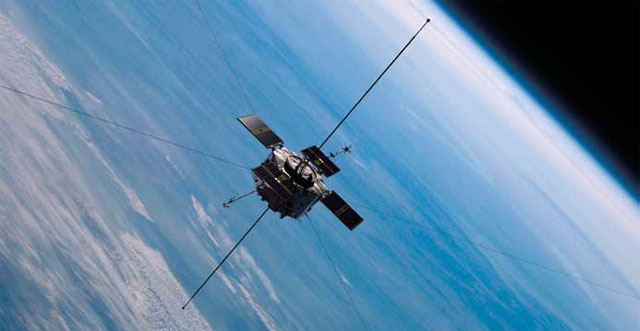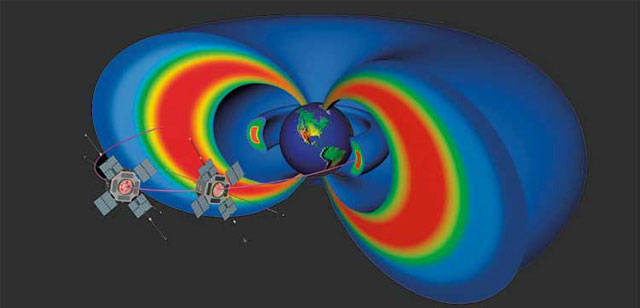
This rendering depicts one of two NASA satellites now preparing to probe the Earth’s radiation shield. NASA image
For the first time since James Van Allen discovered belts of radiation circling the planet in protective blankets of charged particles, NASA is taking a long, hard, stereoscopic look at those belts to better understand space weather that impacts satellites and manned spacecraft.
The lessons learned could enable designers and operators to mitigate the impact of solar storms able to knock out satellites—including those used for GPS navigation and communication.
"The information collected from these probes will benefit the public by allowing us to better protect our satellites and understand how space weather affects communications and technology on Earth,” said John Grunsfeld, associate administrator for NASA's Science Mission Directorate at Headquarters in Washington.
Solar activity including coronal mass ejections can cause the belts to expand, bathing vulnerable spacecraft in radiation that can disrupt or destroy electronics. Twin research satellites launched Aug. 30 from Cape Canaveral, Fla. atop Atlas V rockets. Using two spacecraft to simultaneously collect data will give researchers an unprecedented opportunity to measure what’s going on inside the belts.

Named for James Van Allen, two distinct belts of radiation that envelop the Earth both protect and pose a threat to satellites, and even terrestrial electronics. NASA image.



